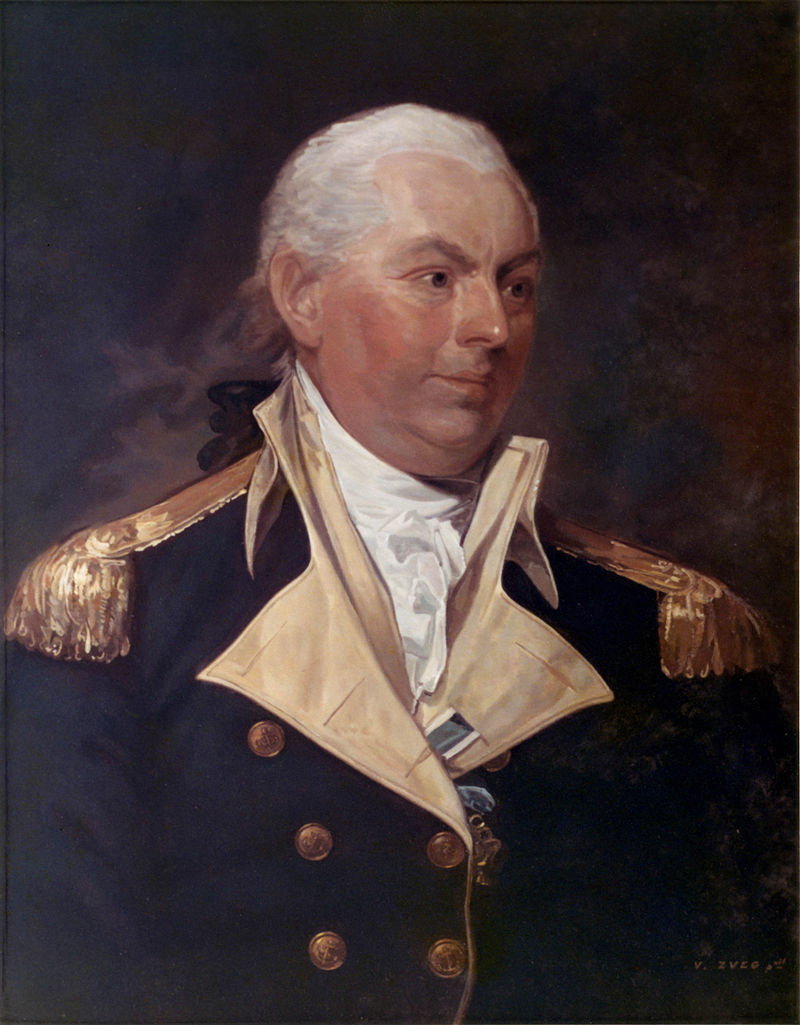The son of an Irish farmer, he rose from impoverished conditions in County Wexford, Ireland, to become the senior Commander of the United States Navy. He arrived in Philadelphia, Pennsylvania, as a teenager and became successful in the maritime trade industry.
When the movement of the American Colonies to be independent from England became popular, he joined the effort. Chosen to outfit the ships of the fledgling Continental Navy, after doing so successfully, he was awarded with a Captain's commission and was given command of a warship "USS Lexington."
Later in command of the "USS Alliance," he became the first to capture a British war vessel while at sea, overpowering the HMS Atalanta and Trepassey, while being severely wounded himself off the coast of Newfoundland in May 1781.
He fought in land battles at both Trenton (December 1776) and Princeton (January 1777), authored a book used by the ships to communicate more effectively, and fought in the American Revolution's last naval battle while returning from Havana in 1783.
After the war, he reentered private business, but, in the 1790s, President George Washington revived the United States Navy permanently and called on the Revolutionary War hero for assistance. In 1794, he was named senior Captain of the Federal Navy and immediately began the task of constructing and equipping the first frigates for the United States. At his urging, the newly-formed government created the Department of the Navy and established government operated naval yards. His training of many of the naval heroes of the War of 1812 led his contemporaries to dub him "The Father of the American Navy."
In the Quasi-War with France from 1798 to 1800, he commanded the "USS United States." He remained head of the Navy until he died from complications caused by asthma. Four ships of the United States Navy have been named in honor of him, the last being the "USS Barry" (DDG-52), a guided missile destroyer commissioned in 1992.
The son of an Irish farmer, he rose from impoverished conditions in County Wexford, Ireland, to become the senior Commander of the United States Navy. He arrived in Philadelphia, Pennsylvania, as a teenager and became successful in the maritime trade industry.
When the movement of the American Colonies to be independent from England became popular, he joined the effort. Chosen to outfit the ships of the fledgling Continental Navy, after doing so successfully, he was awarded with a Captain's commission and was given command of a warship "USS Lexington."
Later in command of the "USS Alliance," he became the first to capture a British war vessel while at sea, overpowering the HMS Atalanta and Trepassey, while being severely wounded himself off the coast of Newfoundland in May 1781.
He fought in land battles at both Trenton (December 1776) and Princeton (January 1777), authored a book used by the ships to communicate more effectively, and fought in the American Revolution's last naval battle while returning from Havana in 1783.
After the war, he reentered private business, but, in the 1790s, President George Washington revived the United States Navy permanently and called on the Revolutionary War hero for assistance. In 1794, he was named senior Captain of the Federal Navy and immediately began the task of constructing and equipping the first frigates for the United States. At his urging, the newly-formed government created the Department of the Navy and established government operated naval yards. His training of many of the naval heroes of the War of 1812 led his contemporaries to dub him "The Father of the American Navy."
In the Quasi-War with France from 1798 to 1800, he commanded the "USS United States." He remained head of the Navy until he died from complications caused by asthma. Four ships of the United States Navy have been named in honor of him, the last being the "USS Barry" (DDG-52), a guided missile destroyer commissioned in 1992.
Bio by: Bigwoo
Inscription
FATHER OF THE AMERICAN NAVY
Family Members
Advertisement
See more Barry memorials in:
Explore more
Sponsored by Ancestry
Advertisement













